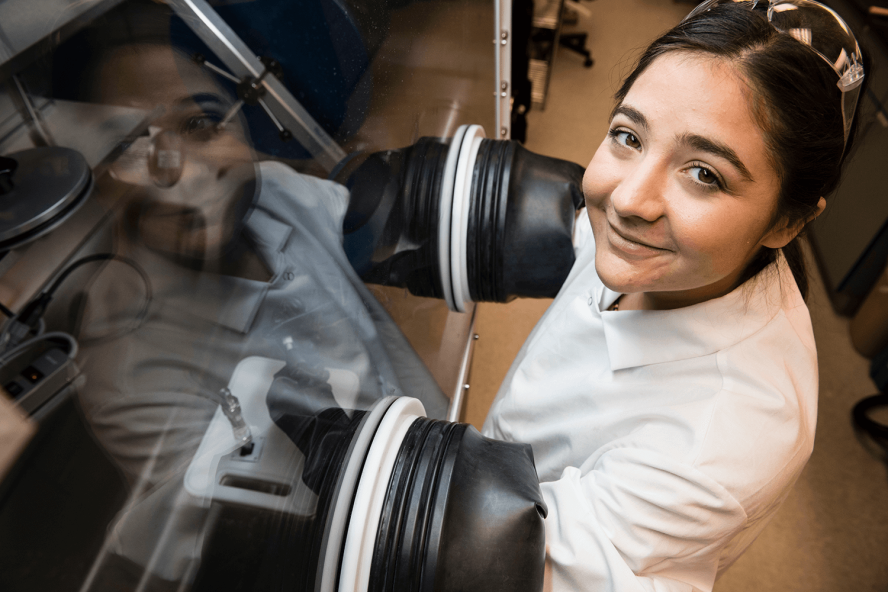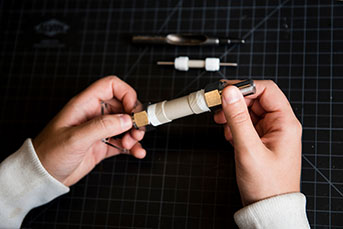Fire safety for mobile phones

By Kristin Livingston, A05
Siri, what’s the distance between the earth and the sun? What time does the pharmacy close? When is my first appointment tomorrow—and with whom?
Having the answers to all of life’s questions in your back pocket is, quite frankly, miraculous. Roughly three-quarters of Americans (77%) own smartphones, according to the Pew Research Center. But how many people actually think about how that smart device technologically works?
Enter student researcher Annalisa DeBari, E18. DeBari works in the mechanical engineering lab of Assistant Professor Iryna Zenyuk, who has been researching the reliability and safety of metal and lithium ion batteries, which are used in many smartphones; her work recently earned her a prestigious National Science Foundation CAREER Award.
DeBari furthered that work as a full-time Summer Scholar in the summer of 2017. From modeling to X-rays, every day, she says, was exciting because of the subject and the support of her professor. “Iryna has always been kind and motivating,” DeBari says. “She’s provided a lot of really great insight and articles so I can be prepared in this research. I really appreciate her willingness to give me this opportunity as an undergraduate.”
Depending on how long a device is on, lithium ion batteries can complete millions of cycles when used. Over time, the degradation naturally increases and safety decreases (take the combustion of Samsung Galaxy Note 7 phones in 2016).
It all hinges on the battery’s microstructure. This summer, DeBari designed a battery holder researchers can use to X-ray the battery without having to take it apart.
 DeBari holds a battery cell that she has been testing in the lab.
DeBari holds a battery cell that she has been testing in the lab.With the guidance of Zenyuk and graduate student researchers, DeBari taught herself how to use computational modeling software to see if the battery holder would work. She then used a clear box fitted with rubber gloves to assemble the battery in an oxygen-free zone. Imaging of the batteries was done in 180-degree slices at the Department of Energy's National Synchrotron Light Source II; DeBari used that data and the computational modeling software to assemble all the images into a full 3-D model to show what damage occurred within the sample battery over the course of its cycles.
“[Annalisa’s] summer research project advanced our understanding of methods feasible for operando diagnostics of batteries,” Zenyuk says. “She is a real problem-solver. This is what engineering is all about.”
DeBari had done other research for Zenyuk prior to this investigation, but she’d never had a full summer to dive into a project like this one. “It’s been so good to focus on one just one initiative,” she says. “And in such a broad field, you can get sidetracked by papers and other research. During this break from classes and track,”—she’s an avid runner and member of the Tufts track team—“I’ve really enjoyed being able to have the time and full attention to go down some of those rabbit holes.”
Graduate school is on DeBari’s horizon after Tufts, hopefully with a career in green energy. For her, this summer has been a taste of what that might look like.
“Being a Summer Scholar has meant a lot,” DeBari says. “It’s a competitive program. To know that what I’m trying to do is fully supported by my professor and the whole department feels invaluable and has been so important to me.”
Department:
Mechanical Engineering